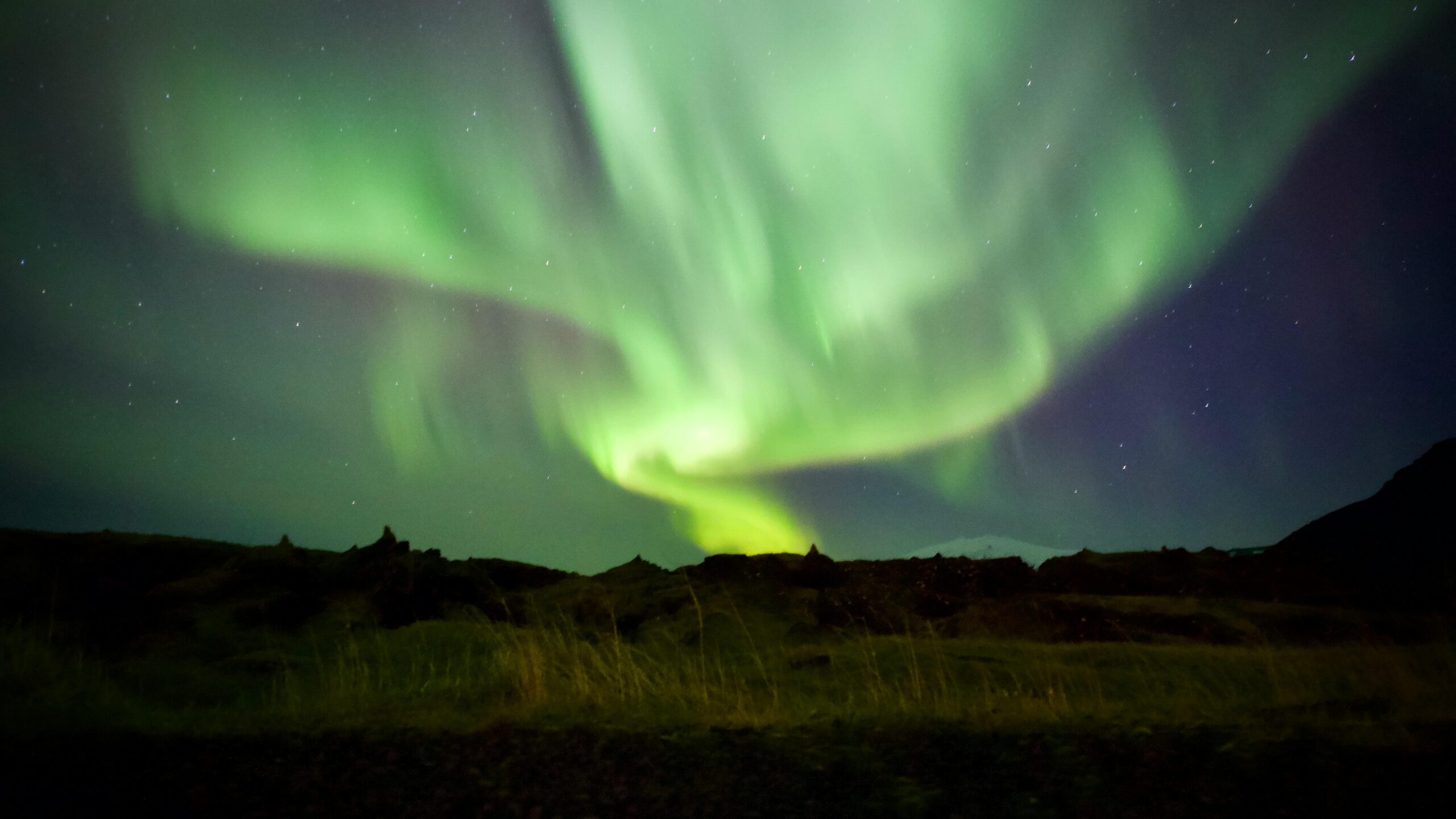Unlocking the Mysteries: Atmosphere Examples That Reveal Stunning Secrets of Our World
Have you ever wondered how the earth’s atmosphere shapes everything around us in ways we barely notice? The atmosphere is not just a simple layer of air; it’s a dynamic, complex system that holds hidden secrets of our planet’s climate, weather patterns, and even life itself. In this article, we will dive deep into atmosphere examples that unveil astonishing facts about how this invisible shield affects our daily existence and the natural world. Curious about how the atmosphere influences phenomena like the auroras, storms, or even the delicate balance of gases essential for life? You’re in the right place!
From the dazzling display of the Northern Lights to the powerful force of tropical cyclones, the atmosphere plays a critical role in shaping the environment. But did you know that the atmosphere also acts as a gigantic filter protecting us from harmful solar radiation? Exploring these atmosphere examples with explanations will not only expand your understanding but also reveal the breathtaking wonders of our planet’s protective veil. Whether it’s the stratosphere’s ozone layer or the troposphere where weather unfolds, each layer tells a story of survival, transformation, and balance.
So, what exactly makes the atmosphere so fascinating? How does it interact with climate change, air pollution, and even human health? By uncovering these secrets, you’ll gain a new appreciation for the air we breathe and the forces that sustain life on Earth. Stay tuned as we explore the most compelling atmosphere examples that reveal stunning secrets and answer the burning questions about our planet’s invisible guardian.
7 Mind-Blowing Atmosphere Examples That Uncover Hidden Mysteries of Earth’s Layers
The Earth’s atmosphere always fascinates many people, but what if I told you that there are mind-blowing atmosphere examples that uncover hidden mysteries of our planet’s layers? The atmosphere isn’t just some invisible gas surrounding us; it’s a complex, dynamic system that reveals secrets about Earth’s past, present, and future. From strange optical effects to mysterious chemical phenomena, these atmosphere examples that reveal stunning secrets of our world will make you look up at the sky differently.
1. The Aurora Borealis and Aurora Australis: Nature’s Light Show
One of the most spectacular atmosphere examples is the Aurora Borealis in the northern hemisphere and Aurora Australis down south. These glowing curtains of light, dancing in the night sky, are caused by charged particles from the sun hitting Earth’s magnetic field and atmosphere. When these solar winds collide with oxygen and nitrogen atoms high up in the thermosphere, they produce vivid colors like green, pink, and purple. What is fascinating is that this natural light show reveals the structure of Earth’s magnetosphere, a protective shield that helps us from harmful solar radiation.
- Occur mainly in polar regions
- Colors depend on the type of gas and altitude
- Help scientists understand solar activity and magnetic field changes
2. The Ozone Layer: Earth’s Sunscreen
Far above us, the ozone layer acts like a shield that protects all living beings from the sun’s dangerous ultraviolet rays. This layer, found in the stratosphere, contains a high concentration of ozone (O3) molecules that absorb UV radiation. Without it, life on Earth would struggle to survive. The discovery of the ozone hole in the 1980s was a shocking revelation showing how human activities could harm this vital shield. It showed how chemicals like chlorofluorocarbons (CFCs) caused ozone depletion, leading to increased UV radiation reaching Earth’s surface.
- Located about 15 to 35 kilometers above Earth
- Absorbs 97-99% of the sun’s medium-frequency UV light
- Ozone depletion led to international efforts like the Montreal Protocol
3. The Troposphere: Where Weather Happens
The troposphere is the lowest layer of Earth’s atmosphere, extending from the surface up to about 8 to 15 kilometers. It contains roughly 75% of the atmosphere’s mass and almost all water vapor, which explains why weather phenomena happen here. Clouds, rain, storms, and even the changing seasons are all part of this layer’s complex dynamics. Atmospheric pressure and temperature decrease with altitude in the troposphere, influencing wind patterns and jet streams, which are critical for global climate.
- Contains 75% of atmospheric mass and 99% of water vapor
- Temperature drops about 6.5°C per kilometer upward
- Location of all weather events and human activity’s direct impact
4. The Mesosphere: The Mystery Layer
Above the stratosphere lies the mesosphere, a layer between 50 and 85 kilometers high. This layer is just as mysterious as it is important. It’s where most meteors burn up when entering Earth’s atmosphere, creating the shooting stars we all love to watch. The mesosphere is extremely cold, with temperatures dropping as low as -90°C. Scientists still don’t fully understand many processes here because it’s difficult to study directly; it’s too high for planes and too low for satellites.
- Burns up most meteors before they hit Earth
- Extremely cold temperatures, the coldest in the atmosphere
- Difficult to study due to its altitude range
5. The Ionosphere: Electrifying the Sky
The ionosphere is a highly ionized part of the upper atmosphere, stretching roughly from 60 to 1,000 kilometers above Earth. It’s filled with ions and free electrons caused by solar radiation, making it essential for radio communication and GPS signals. The ionosphere can reflect or absorb radio waves, which helps transmit signals across long distances. During solar storms, this layer can become highly disturbed, sometimes causing blackouts in communication systems and power grids.
- Contains ions and free electrons
- Reflects radio waves for long-distance communication
- Affected by solar storms and space weather
6. The Green Flash: A Rare Optical Phenomenon
Ever heard about the green flash at sunset? It’s a rare atmospheric optical phenomenon that happens just after the sun disappears below the horizon. The green flash occurs due to the refraction of sunlight in the atmosphere, where the shorter green wavelengths separate from the red and orange ones. This phenomenon reveals how Earth’s atmosphere refracts and bends light, showing us the atmosphere isn’t just empty space but a medium that shapes our vision of the sky.
- Happens during sunrise or sunset
- Caused by atmospheric refraction and dispersion of light
- Very brief and rare, often lasting only a second or two
7.
How Different Atmosphere Types Shape Weather Patterns: Surprising Examples Explained
How Different Atmosphere Types Shape Weather Patterns: Surprising Examples Explained
The Earth’s atmosphere is a complex, multilayered blanket of gases that surrounds our planet, but did you ever wonder how different types of atmospheres could shape the weather we experience? From thick, humid tropical air to dry, cold polar masses, the atmosphere isn’t just a static shell—it actively influences everything from daily weather forecasts to long-term climate trends. In New York and beyond, understanding atmosphere examples helps us unravel some of the stunning secrets about why weather behaves in such unpredictable ways.
What Are Atmosphere Types and Why They Matter?
Simply put, atmosphere types refer to the varying characteristics of air masses and atmospheric layers that cover the Earth. These types can differ based on temperature, humidity, pressure, and even altitude. These differences result in distinct weather phenomena. For example, a moist, warm air mass from the ocean will produce very different weather than a dry, cold air mass descending from the poles.
The atmosphere is divided into several layers—troposphere, stratosphere, mesosphere, thermosphere, and exosphere—each with unique properties. Most weather takes place in the troposphere, the lowest layer, but upper layers also impact global weather patterns indirectly. For example, the stratosphere contains the ozone layer which protects us from harmful UV radiation and influences temperature gradients.
Surprising Atmosphere Examples That Reveal Stunning Secrets
Here are some atmosphere examples that show how different air types create unusual and sometimes extreme weather conditions:
- Maritime Tropical (mT) Air Mass: Originates over warm ocean waters, usually near the tropics. This air type brings high humidity and warmth, often causing heavy rainfall and thunderstorms. New York experiences this when tropical storms or hurricanes make their way up the coast.
- Continental Polar (cP) Air Mass: This cold, dry air comes from northern land areas like Canada or Siberia. It often brings chilly, dry conditions, especially during winter months in New York, resulting in clear skies but biting cold.
- Continental Tropical (cT) Air Mass: Hot, dry air originating from deserts such as the American Southwest, this type causes heatwaves and drought conditions.
- Maritime Polar (mP) Air Mass: Cool, moist air that forms over cold ocean waters. This air mass can create fog, drizzle, and overcast skies, particularly in coastal regions like New York during spring and fall.
These variations in atmosphere types are not just academic—they directly influence the everyday life and economic activities in cities. For instance, if a maritime tropical air mass moves over New York, it might lead to sudden thunderstorms and humidity spikes, impacting transportation and outdoor events.
How Atmospheric Layers Interact With Weather Patterns
The interaction of different atmosphere layers also plays a huge role in weather shaping. For example:
- The troposphere is where most weather occurs because of its high water vapor content and temperature variability.
- The stratosphere, while more stable, affects jet streams which are fast-moving air currents that steer storms and influence temperature distribution.
- Changes in the mesosphere and above can affect phenomena such as auroras and meteor showers but have limited direct impact on daily weather.
Consider the jet stream—a narrow band of strong winds in the upper troposphere and lower stratosphere. When it shifts southward, it can pull cold Arctic air down into New York, causing sudden cold snaps. Conversely, a northward shift brings warm air from the south, leading to unseasonably warm days.
A Quick Comparison of Atmosphere Examples and Their Weather Impacts
| Atmosphere Type | Origin Region | Temperature | Humidity | Typical Weather Effects |
|---|---|---|---|---|
| Maritime Tropical (mT) | Warm oceans (tropics) | Warm | High | Thunderstorms, heavy rain, hurricanes |
| Continental Polar (cP) | Northern continents | Cold | Low | Clear, cold winters, dry air |
| Continental Tropical (cT) | Deserts | Hot | Low | Heatwaves, drought |
| Maritime Polar (mP) | Cold oceans | Cool | High | Fog, drizzle, overcast skies |
Historical Context: How Understanding Atmosphere Types Changed Weather Forecasting
In the early 20th century, meteorologists didn’t fully grasp how air masses influenced weather. The breakthrough came with the development of the air mass theory by meteorologists like Vilhelm Bjerknes. This theory explained that weather changes resulted from interactions between different air masses. Before that, weather prediction was largely guesswork.
This understanding allowed forecasters to predict storms, cold fronts, and heatwaves more accurately. For example, knowing when a maritime tropical air mass would collide with a continental polar air mass helped predict the formation of powerful storms along the East Coast
Top 5 Real-Life Atmosphere Examples in English to Boost Your Understanding of Climate Science
The atmosphere surrounds our planet like an invisible shield, but understanding it can be tricky sometimes. People often think the atmosphere is just “air,” but it’s much more complex and full of surprises. To really grasp climate science and how the Earth works, you need to see real-life atmosphere examples. These examples reveal stunning secrets about our world that textbooks might not explain clearly. Let’s dive into the top 5 real-life atmosphere examples that boost your understanding of climate science and why atmosphere examples are so crucial.
1. The Aurora Borealis: Nature’s Light Show in the Atmosphere
One of the most breathtaking atmosphere examples is the Aurora Borealis, also called the Northern Lights. This phenomenon happens when charged particles from the sun collide with gases in the Earth’s atmosphere, like oxygen and nitrogen. These collisions create colorful lights dancing across the sky, mostly near the poles.
- Happens mostly in high-latitude regions (Arctic, Antarctic)
- Shows interaction between solar wind and Earth’s magnetic field
- Reveals composition of the upper atmosphere layers
This example is important because it teaches us about the magnetosphere’s role in protecting Earth from solar radiation. Plus, it helps scientists understand space weather and its impact on communication systems on Earth.
2. The Stratospheric Ozone Layer: Earth’s UV Shield
Another essential atmosphere example is the ozone layer, found in the stratosphere, about 10 to 30 miles above us. This layer absorbs most of the sun’s harmful ultraviolet (UV) radiation, protecting life on Earth. Without it, skin cancers and other radiation damages would be much more common.
- Located in the stratosphere (10-30 miles altitude)
- Absorbs 97-99% of UV-B and UV-C radiation from the sun
- Ozone depletion has caused global concern since the 1980s
Historically, the discovery of the ozone hole over Antarctica in the 1980s shocked the world and led to the Montreal Protocol, an international treaty to phase out ozone-depleting substances. This example not only shows how atmosphere protects life but also how human activity can harm it.
3. Thunderstorms and the Troposphere: The Weather Factory
Most weather phenomena happen in the troposphere, the lowest atmospheric layer where we live. Thunderstorms are a great example of how the atmosphere behaves dynamically. Warm moist air rises, cools, and condenses into clouds, releasing energy and sometimes causing lightning and heavy rain.
- Troposphere extends from Earth’s surface up to 7-12 km
- Contains about 75% of the atmosphere’s mass and almost all water vapor
- Thunderstorms form from convection currents and moisture in this layer
Studying thunderstorms helps us understand energy transfer in the atmosphere and the water cycle. These events are critical to climate models because they influence temperature, humidity, and precipitation patterns globally.
4. The Greenhouse Effect: How Our Atmosphere Keeps Earth Warm
One of the most talked-about atmosphere examples in climate science is the greenhouse effect. Certain gases in the atmosphere, like carbon dioxide (CO2), methane (CH4), and water vapor trap heat from the sun. Without these gases, Earth would be too cold for most life forms.
- Greenhouse gases absorb and re-emit infrared radiation
- Keeps average Earth temperature around 59°F (15°C)
- Human activities have increased greenhouse gas concentrations, causing global warming
This example is fundamental because it explains the basic mechanism behind climate change. Temperature records show a rising trend linked to increasing greenhouse gases, proving that atmosphere composition directly affects the planet’s climate.
5. Volcanic Eruptions and Atmospheric Impact: Nature’s Climate Modifier
Volcanoes do not just shape landscapes but also change the atmosphere temporarily or even for years. When a volcano erupts, it releases ash, sulfur dioxide (SO2), and other particles high into the atmosphere. These particles can block sunlight, leading to temporary cooling of the Earth’s surface.
- Major eruptions can inject particles into the stratosphere, lasting months or years
- The 1991 Mount Pinatubo eruption cooled global temperatures by about 0.5°C for 2 years
- Volcanic aerosols reflect sunlight, influencing atmospheric chemistry and climate patterns
This example shows how natural events can influence climate on a short-term basis and highlights the atmosphere’s sensitivity to changes in particle composition.
Atmosphere Examples Table: Quick Reference
| Example | Atmospheric Layer | Key Gases/Particles | Climate Science Relevance | Real-World Impact |
|---|---|---|---|---|
| Aurora Borealis | Thermosphere/Ionosphere | Oxygen, Nitrogen | Solar wind interaction, magnetic field | Space weather effects on technology |
| Ozone Layer | Stratosphere | Ozone (O |
What Are the Most Fascinating Atmosphere Examples in Nature? Discover Stunning Scientific Facts
What Are the Most Fascinating Atmosphere Examples in Nature? Discover Stunning Scientific Facts, Atmosphere Examples That Reveal Stunning Secrets of Our World
Our atmosphere is an amazing, ever-changing blanket of gases that surround the Earth, protecting life and making our planet unique in the solar system. Many people think atmosphere is just air, but it’s much more complex and full of wonders that reveal secrets about how our world works. From the fiery colors of sunset, to mysterious layers high above us, the atmosphere examples in nature are truly fascinating and sometimes hard to believe. Let’s dive into some of the most intriguing atmosphere phenomena and what science tells us about them.
What Is Atmosphere? Basic Facts and Importance
Atmosphere is the layer of gases held close to a planet by gravity. For Earth, this mixture includes nitrogen (about 78%), oxygen (21%), and other gases like argon, carbon dioxide, and trace gases. It’s not only essential for breathing but also shields us from harmful solar radiation and helps regulate temperature. Without atmosphere, Earth would be a frozen rock drifting in space.
Some important roles of atmosphere:
- Protects from space debris burning up (meteors)
- Regulates temperature through greenhouse effect
- Allows weather and climate systems to develop
- Provides essential gases for life
Stunning Atmospheric Layers You Should Know
Our atmosphere isn’t just one uniform layer, it consists of multiple levels, each with unique characteristics. Scientists define these layers by temperature changes and altitude:
- Troposphere (0-12 km): The lowest layer where weather happens and where almost all life exists. Temperature decreases with height here.
- Stratosphere (12-50 km): Contains the ozone layer, which absorbs harmful UV rays. Temperature increases with altitude due to ozone absorbing sunlight.
- Mesosphere (50-85 km): The coldest layer, where meteors burn up.
- Thermosphere (85-600 km): Very thin air, but temperatures can get very high due to solar radiation.
- Exosphere (above 600 km): The outermost layer, gradually fading into space.
Each layer reveal how atmosphere adapt to different forces like solar energy and Earth’s magnetic field.
Breathtaking Atmospheric Phenomena in Nature
There are many atmosphere examples that reveal stunning secrets and beauty. Some of the most extraordinary natural displays are:
-
Auroras (Northern and Southern Lights)
Seen near the poles, these colorful light shows happen when charged particles from the sun interact with Earth’s magnetic field and atmosphere. The result is shimmering curtains of green, pink, and purple light dancing in the night sky. It’s a vivid reminder of space weather affecting our atmosphere. -
Rainbows
Occur when sunlight refracts, reflects, and disperses through water droplets in the air. The spectrum of colors represents different wavelengths of light bending at slightly different angles. Rainbows also illustrate how atmosphere affects light, revealing the hidden workings of optics in nature. -
Glories and Brocken Spectres
Strange optical phenomena seen from mountain tops or airplanes. Glories are rings of colored light around shadows, while Brocken spectres show magnified, eerie shadows cast on clouds below. These happen because of water droplets scattering sunlight. -
Sun Dogs (Parhelia)
Bright spots appearing at the sides of the sun caused by sunlight refracting through hexagonal ice crystals in the atmosphere. Sun dogs often appear as rainbow-like patches and are a sign of cirrus clouds above.
How Atmosphere Affects Weather and Climate
Weather patterns you see everyday are direct results of atmosphere dynamics. The uneven heating of Earth’s surface creates pressure differences that move air masses around the globe. This movement forms all kinds of weather like storms, hurricanes, and gentle breezes.
- Warm air rises, cool air sinks
- Jet streams guide storm paths
- Humidity and temperature influence precipitation
- Clouds form when moist air cools and condenses
Understanding atmosphere examples help meteorologists predict weather better, saving lives and property.
Comparing Earth’s Atmosphere to Other Planets
Earth’s atmosphere is unique, but other planets also have atmospheres that teaches us about different conditions in space:
| Planet | Atmosphere Composition | Key Feature |
|---|---|---|
| Venus | Mostly carbon dioxide (96%), thick clouds of sulfuric acid | Runaway greenhouse effect causing extreme heat |
| Mars | Thin atmosphere, mostly CO2 (95%) | Very low pressure, dust storms |
| Jupiter | Mainly hydrogen and helium | Thick gas layers with storms like Great Red Spot |
| Titan (moon) | Nitrogen and methane-rich | Dense atmosphere with lakes of liquid methane |
This comparison shows how Earth is rare, with breathable air and temperature suitable for water in liquid form.
Practical Examples of Atmos
Exploring Unique Atmosphere Examples: How They Influence Life and Environment on Our Planet
Exploring Unique Atmosphere Examples: How They Influence Life and Environment on Our Planet
When we think about the atmosphere, most people imagine just a simple layer of air surrounding Earth. But atmosphere examples are far more diverse and fascinating than that. From the thick, toxic skies of Venus to the thin, icy air of Mars, atmospheres shape everything from climate, life forms, to geological processes. Understanding these unique atmosphere examples not only reveals stunning secrets of our world but also helps us grasp how life adapt in different environmental conditions.
What Is An Atmosphere? Basic Explanation and Importance
An atmosphere is a layer of gases that surround a planet or celestial body. This layer stays held by gravity, and it can vary a lot in composition, thickness, and behavior. Atmospheres influence surface temperatures by trapping heat, protect life from harmful solar radiation, and play a role in weather and climate patterns.
On Earth, our atmosphere is made mostly of nitrogen (about 78%) and oxygen (around 21%), with small amounts of other gases like argon, carbon dioxide, and water vapor. This mix creates the conditions necessary for life as we know it. Without atmosphere, Earth would be a lifeless rock, exposed to the harsh vacuum and radiation of space.
Unique Atmosphere Examples From Our Solar System
Looking beyond Earth, every planet in our solar system has some kind of atmosphere, but they differ greatly. Here are some notable examples:
- Venus: The atmosphere is extremely dense and made mostly of carbon dioxide, with clouds of sulfuric acid. Its thick atmosphere causes a runaway greenhouse effect, making surface temperatures hot enough to melt lead (about 467°C).
- Mars: Thin atmosphere mostly carbon dioxide, with traces of nitrogen and argon. Its thinness means little heat is retained, causing extreme temperature swings and making liquid water unstable on the surface.
- Titan (moon of Saturn): Has a dense nitrogen atmosphere with methane clouds, making it the only moon in the solar system with a thick atmosphere. It rains methane and ethane, creating lakes and rivers of liquid hydrocarbons.
- Jupiter and Saturn: Their atmospheres are mostly hydrogen and helium, very thick and deep, with storms like Jupiter’s Great Red Spot lasting centuries.
Each of these examples shows how atmospheres shape planetary environments differently, influencing temperature, weather, and potential for life.
How Atmospheres Influence Life and Environment on Earth
Earth’s atmosphere is unique because it supports diverse life. It doesn’t just provide oxygen for breathing but also regulates climate and protects from solar and cosmic radiation.
Here some ways Earth’s atmosphere influence life and environment:
- Climate control: The atmosphere’s greenhouse gases trap heat to maintain a stable temperature. Without it, Earth would be freezing cold.
- Weather and water cycle: Atmosphere carries moisture, forming clouds and precipitation that supports agriculture and ecosystems.
- Protection: The ozone layer in the stratosphere absorbs harmful ultraviolet rays from the Sun.
- Air composition: The balance of oxygen and nitrogen supports respiration for animals and photosynthesis in plants.
If the atmosphere would change drastically, life on Earth could be threatened. For example, increased carbon dioxide levels contribute to global warming, affecting ecosystems worldwide.
Atmosphere Examples That Reveal Stunning Secrets of Our World
Studying atmospheres reveals hidden stories about planetary history and geologic activities. For instance:
- Earth’s ancient atmosphere had very little oxygen. It was only after cyanobacteria evolved photosynthesis that oxygen levels rose, enabling complex life.
- Venus’ atmosphere suggests it might once had oceans, but a catastrophic greenhouse effect boiled them away.
- Mars’ thin atmosphere and signs of dry riverbeds indicate it once had a thicker atmosphere and possibly liquid water on surface.
These examples show how atmospheres can record the evolution of planets, clues that scientists use to understand if life could exist elsewhere.
Table: Comparison of Atmosphere Attributes on Selected Planets
| Planet/Moon | Main Gases | Atmospheric Pressure (Earth = 1) | Surface Temperature (°C) | Notable Features |
|---|---|---|---|---|
| Earth | Nitrogen, Oxygen | 1 | 15 | Supports life, weather systems |
| Venus | Carbon dioxide | 92 | 467 | Runaway greenhouse effect, acid clouds |
| Mars | Carbon dioxide | 0.006 | -60 | Thin atmosphere, dust storms |
| Titan | Nitrogen, Methane | 1.5 | -179 | Methane lakes, thick haze |
| Jupiter | Hydrogen, Helium | Very high | -145 | Massive storms, strong winds |
How Humans Study Atmospheres and Why It Matters
Scientists use various methods to study atmospheres:
- **Satellites
Conclusion
In conclusion, understanding atmosphere through various examples allows us to appreciate how mood and tone are skillfully crafted in literature, film, and everyday experiences. Whether it’s the eerie stillness of a haunted house, the warm glow of a cozy café, or the tense anticipation before a storm, atmosphere shapes our emotional response and deepens our connection to a story or setting. By paying attention to sensory details, descriptive language, and contextual cues, creators can evoke powerful feelings that linger long after the experience ends. As readers, viewers, or observers, recognizing these atmospheric elements enhances our engagement and interpretation. Next time you encounter a compelling scene or setting, take a moment to reflect on the atmosphere at play—doing so will enrich your appreciation and inspire you to incorporate these techniques into your own creative endeavors. Embrace the power of atmosphere to transform ordinary moments into unforgettable experiences.













